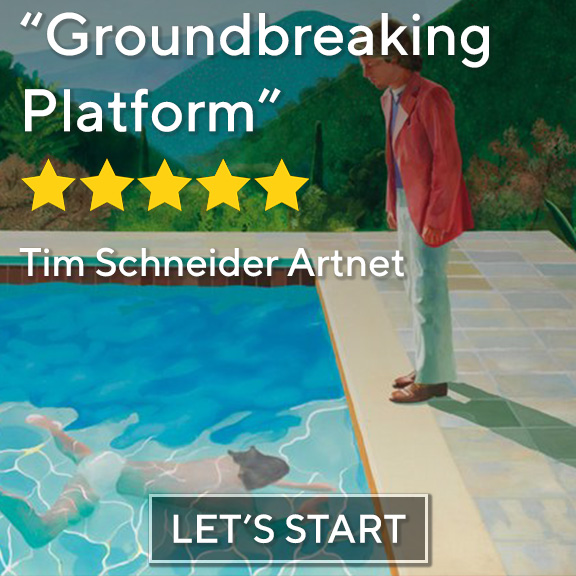

Pourvu que ça dure is a flamboyant and disturbing journey into the artistic universe of Florent Groc.
On the occasion of his first solo exhibition at the Double V gallery, he unveils a series of new oil paintings created in the autumn of 2020. This period, with its d... more >> Four years after inviting him to participate in its inaugural exhibition, the Double V gallery is pleased to present Florent Groc's first solo show within its walls.
Pourvu que ça dure is a flamboyant and disturbing journey into the artistic universe of Florent Groc.
On the occasion of his first solo exhibition at the Double V gallery, he unveils a series of new oil paintings created in the autumn of 2020. This period, with its distended and liberated time, proved to be a propitious time for the painter to experiment. He created landscapes where vegetation invades the pictorial surface. The decoration, composed solely of trees, plants and flowers in fantastic deployments, is executed both meticulously and abstractly, in arabesques. The composition is structured by superimposed coloured planes that annihilate perspective.
Four years after inviting him to participate in its inaugural exhibition, the Double V gallery is pleased to present Florent Groc's first solo show within its walls.
The work of art is thus the culmination of a long process of elaboration. The artist draws from around him all that is capable of nourishing his inner vision (...). In this way, he puts himself in a position to create. He is interiorly enriched by all the forms of which he becomes master, and which he will order some day according to a new rhythm.
Henri Matisse, " Il faut regarder toute la vie avec des yeux d'enfants ",
remarks collected by Régine Pernoud, Le Courrier de l'U.N.E.S.C.O., vol. VI, n°10, October 1953
Pourvu que ça dure is a flamboyant and disturbing journey into the artistic universe of Florent Groc.
On the occasion of his first solo exhibition at the Double V gallery, he unveils a series of new oil paintings created in the autumn of 2020. This period, with its distended and liberated time, proved to be a propitious time for the painter to experiment. He created landscapes where vegetation invades the pictorial surface. The decoration, composed solely of trees, plants and flowers in fantastic deployments, is executed both meticulously and abstractly, in arabesques. The composition is structured by superimposed coloured planes that annihilate perspective.
Florent Groc creates a chromatic odyssey in which fluorescent lights rub shoulders with the dullest shades. He compares his quest for colour to that of an archaeologist looking for a treasure. It obeys in him a necessity that ignores reality.
These paintings are memories, imaginary and synthetic visions of a familiar landscape with clashing references. In the end, it could be as much an underwater view as a terrestrial one. The same is true of the flora that he lays on his supports. Although he has a precise knowledge of plant species, he does not respect the seasons or the regions in which they thrive. He emancipates himself from reality to impose his expressive, emotional and symbolic vision of a still wild nature.
In the manner of a puppet set, Florent Groc arranges these elements in small modules with a precarious balance. The spectator-viewer is invited to look away from the branches as if he were opening curtains, thus reenacting the action of the painter as he slips through the thickets of the hinterland.
In the course of his last solitary explorations, he went off the marked paths, discovering new natural settings. From these refuges, he could see Marseille, the sea, the civilisation he had left behind, in the distance.
This bucolic setting is nevertheless conducive to the unfolding of a tragedy, as some of the titles suggest. At any moment a disturbing element could arrive on stage. This sensation of witnessing the last moments before the changeover penetrates the viewer and incites him to reconsider what he is contemplating.
Joris Thomas, January 2021










